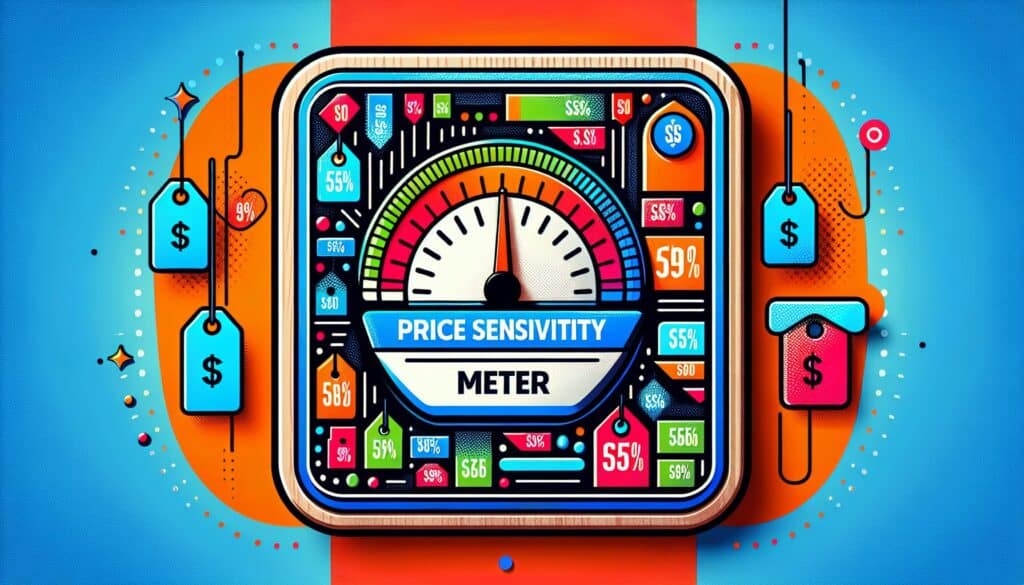Identificare una gamma di prezzi psicologicamente accettabili per un prodotto ponendo ai consumatori quattro domande specifiche sul prezzo.
- Metodologie: Gestione del progetto
Misuratore di sensibilità al prezzo (PSM) di Van Westendorp

Misuratore di sensibilità al prezzo (PSM) di Van Westendorp
- Analisi competitiva, Esperienza del consumatore, Mappatura del viaggio del cliente, Ricerca di mercato, Sviluppo del prodotto, Gestione del prodotto, Prezzi dei prodotti, Proposta di valore
Obiettivo:
Come si usa:
- Agli intervistati è stato chiesto a quale punto di prezzo il prodotto sarebbe: 1) così economico da dubitare della sua qualità, 2) un affare, 3) comincia a diventare costoso e 4) troppo costoso per essere preso in considerazione. Le intersezioni delle risposte indicano un punto di prezzo ottimale e una fascia di prezzo accettabile.
Professionisti
- Fornisce una gamma di prezzi accettabili, facile da capire e da implementare, aiuta a identificare le soglie di prezzo.
Contro
- Non misura direttamente l'intenzione di acquisto a prezzi specifici, i risultati possono essere influenzati dalla familiarità e dal contesto dell'intervistato, non considera i prezzi della concorrenza.
Categorie:
- Clienti e marketing, Economia
Ideale per:
- Comprendere la percezione dei prezzi dei consumatori e identificare una fascia di prezzo accettabile per un prodotto nuovo o esistente.
Il misuratore di sensibilità al prezzo (PSM) di Van Westendorp è particolarmente efficace nelle prime fasi di sviluppo del prodotto, soprattutto nei settori in cui le strategie di prezzo influenzano in modo significativo il successo del mercato, come l'elettronica di consumo, la moda e i prodotti alimentari. Questa metodologia può essere avviata dai team di ricerca di mercato o dai product manager che cercano di comprendere le dinamiche di prezzo in relazione alle aspettative dei consumatori. Spesso è complementare ad altre strategie di pricing come la tecnica Gabor-Granger, in cui è possibile ricavare dati più quantitativi da domande sulla disponibilità a pagare che coinvolgono scenari di acquisto reali. Il PSM facilita l'esplorazione qualitativa dell'atteggiamento dei consumatori nei confronti del prezzo, consentendo a progettisti e ingegneri di posizionare efficacemente i loro prodotti. Ad esempio, nell'industria automobilistica, l'applicazione del PSM durante la fase concettuale può aiutare a valutare come i consumatori percepiscono il prezzo dei nuovi veicoli elettrici rispetto alle opzioni tradizionali, che può essere fondamentale per l'accettazione del mercato. La natura interattiva del PSM consente di coinvolgere diversi segmenti di consumatori, assicurando che i dati risultanti riflettano un'ampia gamma di accettazione dei prezzi, il che è particolarmente prezioso nei settori soggetti a rapidi cambiamenti o a forte concorrenza. Spesso si raccomanda la collaborazione tra i team di marketing, vendite e sviluppo del prodotto, che può portare a un processo decisionale più informato e all'allineamento sulle strategie di prezzo che soddisfano sia la domanda del mercato sia gli obiettivi finanziari. Inoltre, l'impiego del PSM può rivelare le sfumature della psicologia dei consumatori, informando le strategie di branding e la comunicazione sul prezzo, che sono essenziali quando si lanciano prodotti premium.
Fasi chiave di questa metodologia
- Chiedete agli intervistati di indicare il prezzo più basso al quale dubiterebbero della qualità del prodotto.
- Chiedete il prezzo che considerano un affare per il prodotto.
- Chiedere il punto di prezzo che si ritiene stia diventando costoso.
- Determinare il prezzo al quale il prodotto sarebbe troppo costoso per essere preso in considerazione.
- Analizzare le intersezioni dei punti di prezzo per identificare un prezzo ottimale e un intervallo accettabile.
Suggerimenti per i professionisti
- Raccogliere feedback qualitativi insieme ai dati PSM per comprendere le motivazioni alla base della percezione dei prezzi e delle soglie.
- Condurre un'analisi di follow-up per esaminare come i fattori esterni, come i concorrenti e le tendenze del mercato, influenzino la sensibilità ai prezzi e il comportamento dei consumatori.
- Attuare test iterativi aggiustando i punti di prezzo dopo i risultati iniziali del PSM per affinare le strategie di prezzo in base alle risposte reali dei consumatori.
Leggere e confrontare diverse metodologie, raccomandiamo il
> Ampio archivio di metodologie <
insieme ad altre 400 metodologie.
I vostri commenti su questa metodologia o ulteriori informazioni sono benvenuti su sezione commenti qui sotto ↓ , così come tutte le idee o i link relativi all'ingegneria.
Contesto storico
1960
1980
1983
1990
1995
2000
2010
1950
1980
1980
1986
1994
1995
2000
(se la data non è nota o non è rilevante, ad esempio "meccanica dei fluidi", viene fornita una stima approssimativa della sua notevole comparsa)














Post correlati
Questionari sul disagio muscoloscheletrico
Test multivariati (MVT)
Analisi di regressione multipla
Sistemi di cattura del movimento
Metodo MoSCoW
Test mediano dell'umore